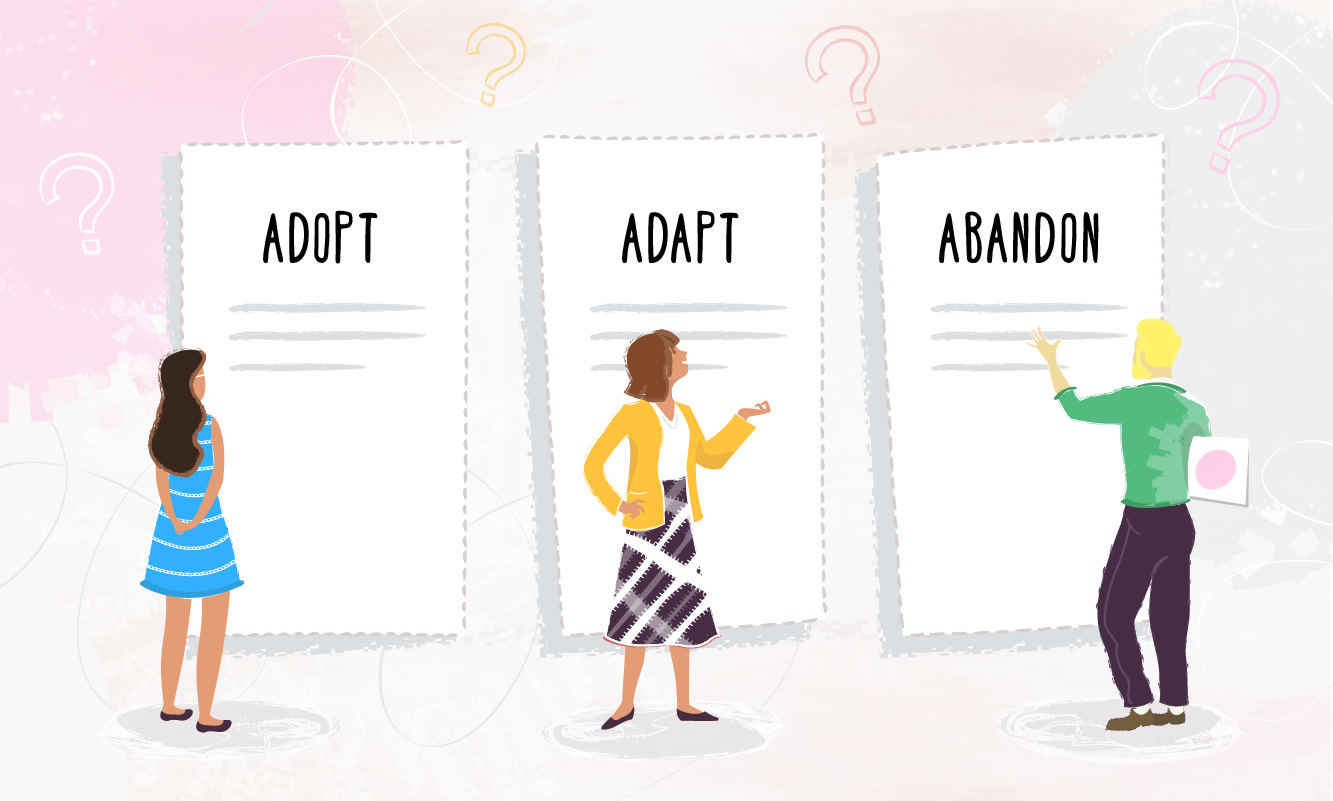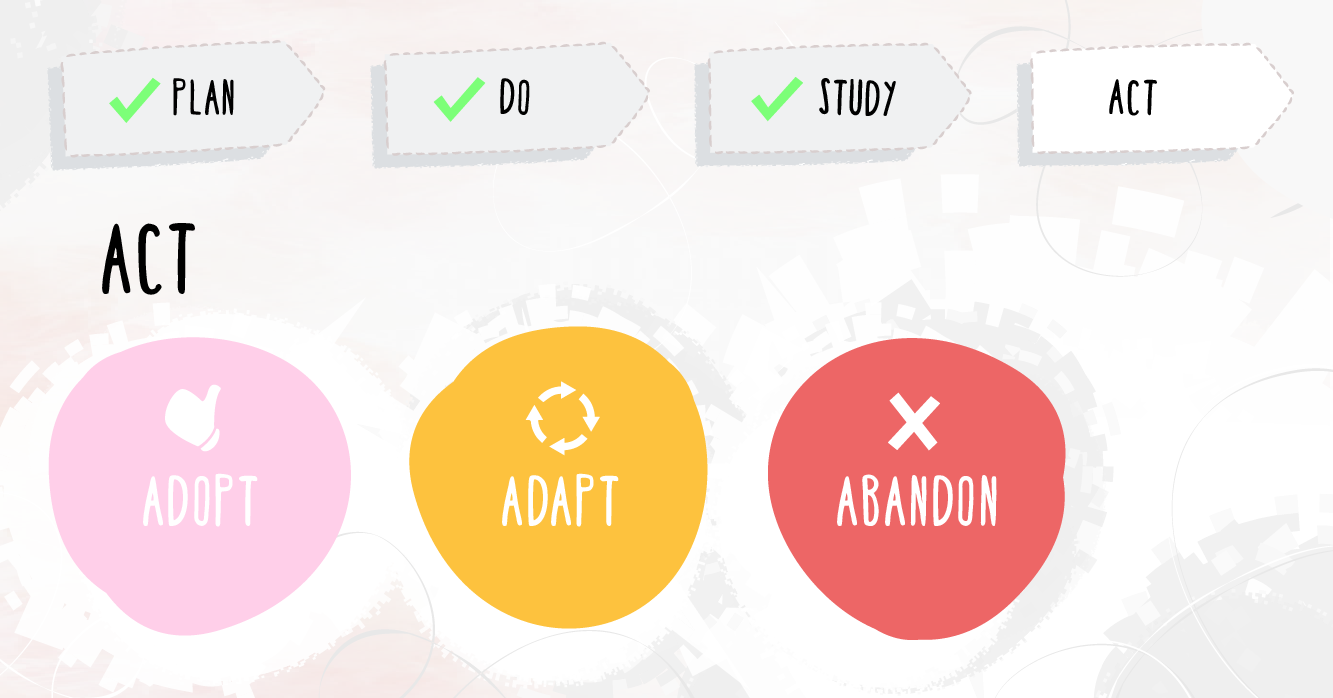Start improving with Life QI today
Full access to all Life QI features and a support team excited to help you. Quality improvement has never been easier.

Organisation already using Life QI?
Sign-up

Published on 9 April 2020 at 11:25

You don’t need to be told that a PDSA can be a really effective quality resource, constantly testing ideas and leading to continuous improvement. The question we’re going to be looking at is how to evaluate the results of your change test leading to how to make the decision of whether to adopt, adapt or abandon.
As part of your PDSA, you will have planned, planned and planned some more! But before you move on to your next PDSA cycle, you will need to evaluate what you have done so far, analysing your data and comparing it to what you predicted. This stage is absolutely crucial to the ongoing success of your quality project and is the moment when you repeat the process exactly as before, tweak or start again from scratch.
How you evaluate the results of your PDSA cycle – and how this shapes your quality decisions - is absolutely crucial to the success of your ongoing project. As part of your PDSA planning schedule, you will have already decided how and when you are going to evaluate with your team.
How to plan your PDSA cycle as a team.
You and your team may have already planned a post-PDSA get together for during the ‘Study’ phase of your PDSA, to discuss the data you have collected, to complete your analysis and to compare predictions.
This is when you need to think about whether you are going to adopt, adapt or abandon your change idea. You can schedule this on Life QI, as the solution automatically lists tasks in order and you may well have created your SPC chart already which is a key part of the evaluation or study stage and will help you to evaluate your results.

You’ve reached the Study phase of your PDSA cycle - now you have to make the decision of 'adopt, adapt, abandon'. This can sometimes be seen as a tricky subject – so let’s take a look at the options.
If you got the results that you had planned for – then this is the time to adopt them going forward!
You may have done one or more cycles of your programme and if you’ve evaluated your results, you’ve got the results you wanted, and you and the team are all in agreement – now is the time to start moving forward with your changes and to implement new quality improvement changes which will in turn lead to sustainable improvement.
If your results are not quite what you wanted – but could be tweaked.
So, you’ve been through your cycle and evaluated - but it’s not quite given you the change results you wanted. You may have an indication, however, that with a bit of tweaking, you could get the results you want, leading to best practice. This is when you need to look back at the change improvement, adapt and change your strategy in order to test it again.
You’ve tested several times – but it’s just not working out.
You may have tested your PDSA and evaluated the data several times and you still haven’t got the results you were looking for. This is when - with consultation with your team – you may need to start your change management process again and try something completely different. If people are new to the process you might want to encourage them not to be disheartened, as all your hard work will eventually lead to implementing and sustaining better quality outcomes.
Whatever you do next in your PDSA process – whether you adopt, adapt or abandon – you and your team will have been through an important collaboration and team effort in order to get to the Study stage. You can build on these experiences to implement your enhanced quality outcomes going forward.
Do you have any special tips for how YOU decide whether to adopt, adapt or abandon within your PDSA – we’d love to know …. email us at team@lifeqisystem.com.
https://www.health.org.uk/sites/default/files/ContinuousImprovementPatientSafety.pdf
http://www.healthystartepic.org/wp-content/uploads/2015/08/CoxAdaptAdoptAbandon.pdf
Full access to all Life QI features and a support team excited to help you. Quality improvement has never been easier.

Organisation already using Life QI?
Sign-up